

Compared to many others who have simply adopted the board and cooler of the GeForce GTX 1080, Gigabyte relies on the revised design of the GeForce GTX 1070 G1 Gaming. In terms of performance, this board is more than sufficient, only for cooling... Gigabyte uses the board of the GTX 1070 Ti G1 Gaming for the GTX 1070 Ti G1 Gaming in the second revision. This is very interesting in that gigabytes simply rotated the GPU by 90°, the voltage converters of the GPU to the left and the memory ... Important preliminary remark
We had already mentioned it at the beginning that almost exclusively the resulting boost clock rates of each GTX 1070 Ti determine the final performance and thus the so-called GPU lottery and not the manufacturer and model.... Power consumption at different loads
The power consumption in the gaming loop is pretty much exactly on the point that Nvidia has set as the power target with 180 watts. In the Torture Loop, the power consumption is also almost exactly on this W... Overclocking
The limits of this card are identical to those of competitors with similar Power Target. With an adjustable Power Target of 122%, the card approved almost 215 watts and was already over the voltage and unfortunately also the Pow... Cooling system and backplate
Of course, the generated waste heat is directly related to the recorded power, for which the cooling solution is responsible for optimum dissipation. The backplate can even actively help here, because it serves not only... Summary
So a lot of effort and effort really did not work to materialize the in-house GeForce GTX 1070 Ti G1 Gaming in this form. Good mediocrity, but at least priced. More seems Gigab...
Power consumption at different loads
The power consumption in the gaming loop is pretty much exactly on the point that Nvidia has set as the power target with 180 watts. In the Torture loop, the power consumption is also almost exactly at this value. With the maximum possible power target of 122% exhausted, the card with just under 215 watts remained still frame and even falls very far below Nvidia's limit of 240 watts.
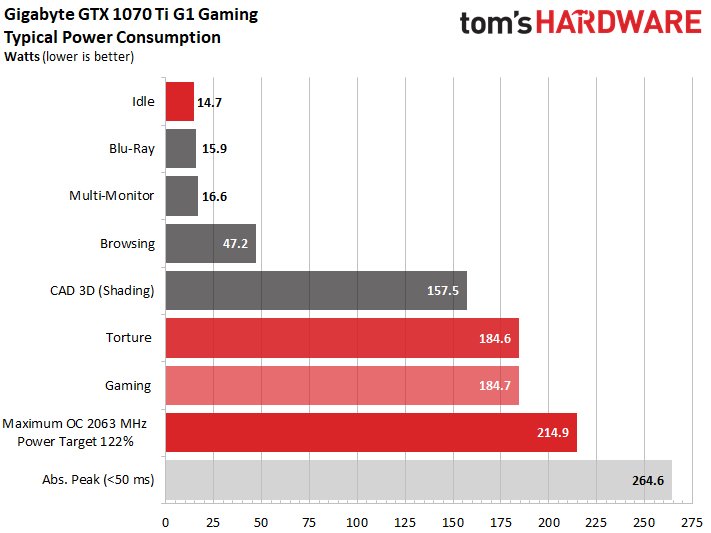
The corresponding voltages for both loops in the factory state are shown in the following diagram:
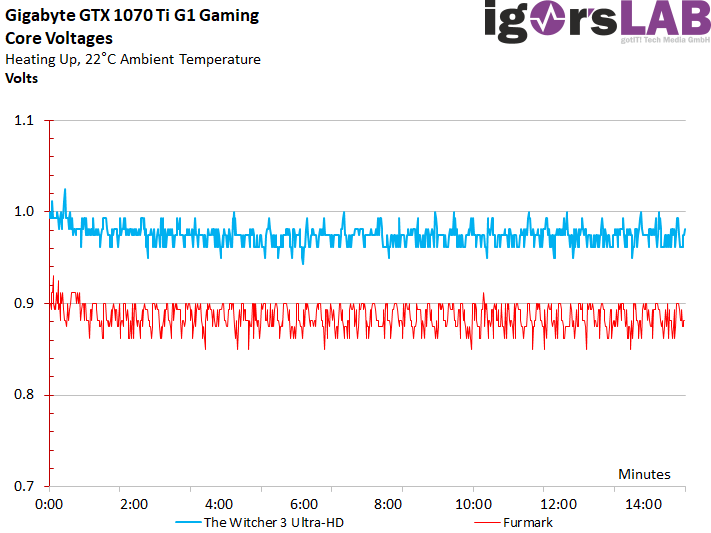
Compliance with the standard on the motherboard slot
With a maximum of 5.6 amps (Torture), the card is pretty much exactly what the PCI SIG sets with a maximum of 5.5 amps (66 watts) for the 12-volt rail on the motherboard slot. In the Gaming Loop, the maximum overclocking is just as much lower as the maximum overclocking. The small, still in the tolerance range exceedance in the Furmark lies causally in the extensive use of RAM. But it was and is already quite close to the border.
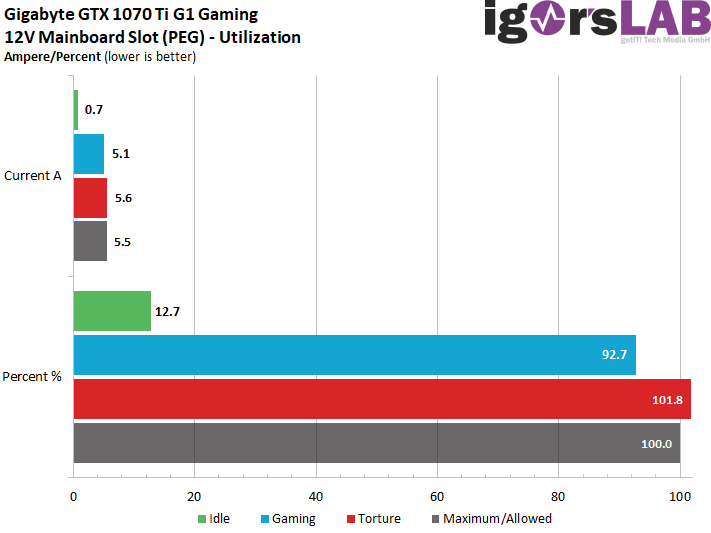
Detailed graphics: power consumption and currents
For a better illustration, we have also recorded all measurement results as detailed curves in the graphs below:
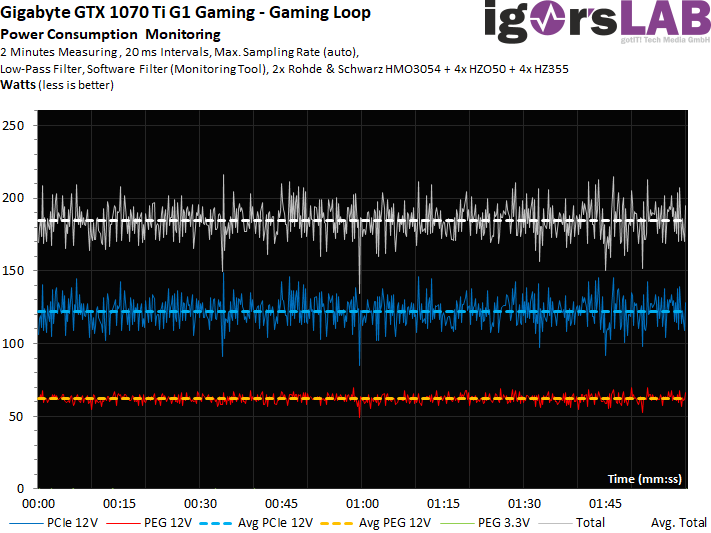
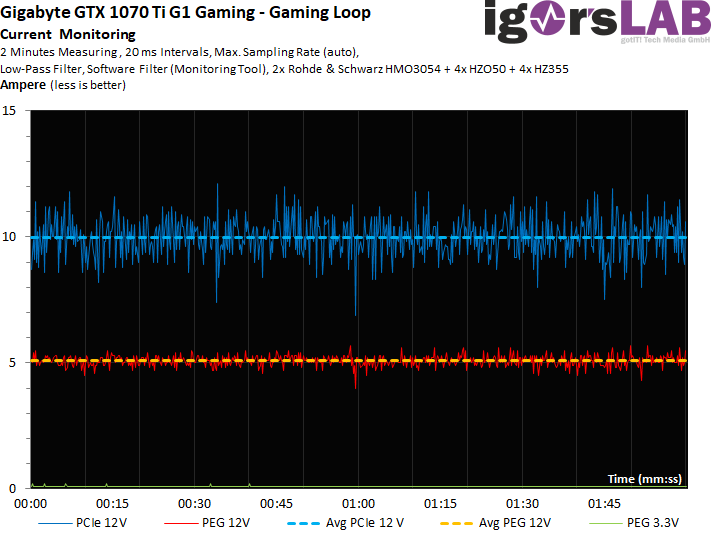
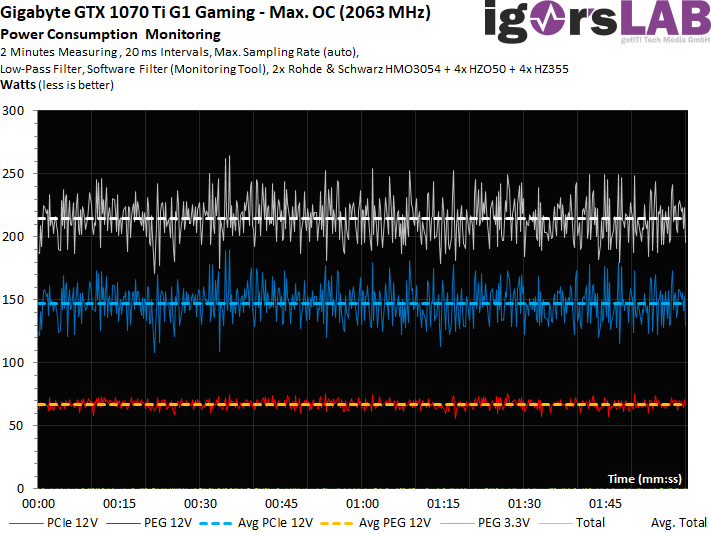
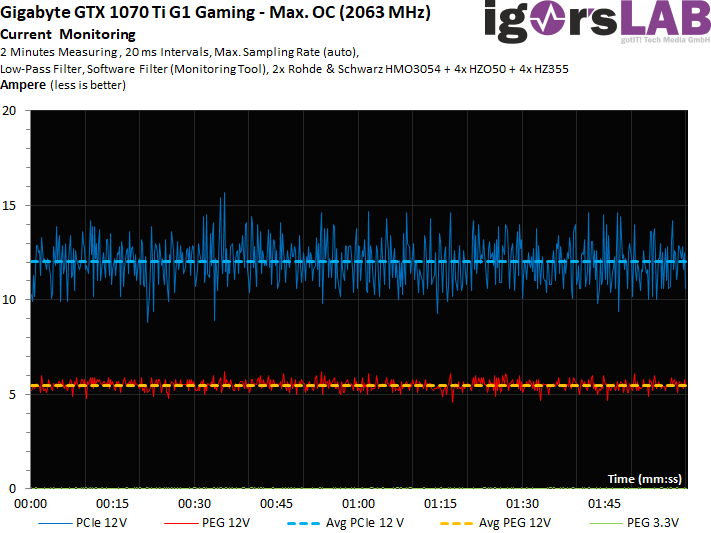
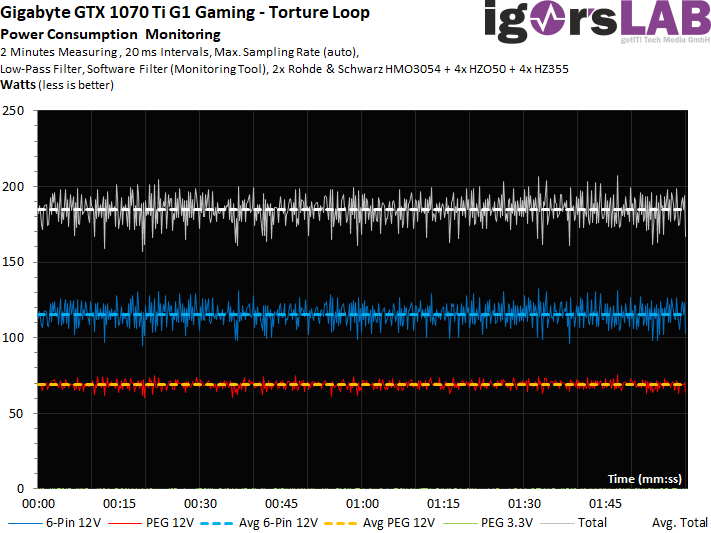
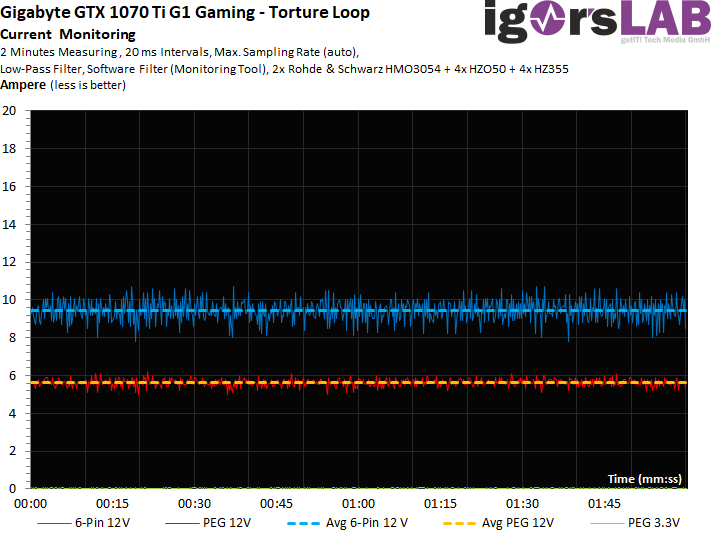

























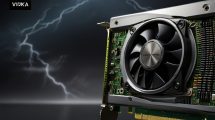















Kommentieren